1/48 Special Hobby Seafire Mk.III, French Aeronavale and Irish Air Corps
This kit was fun, but it took a lot of work. That said, it's a short run kit, so that was expected. I enjoyed it, but even though I thought I was going carefully, there was one thing I didn't notice that kind of makes the end result a little janky. I paid $32 for it on sale, including shipping, which makes it the cheapest kit in the mix by about $18 because it included PE and harness, and the decals were pretty nice.
Pros: Included PE fret and acetate instrument detailing means this kit has excellent cockpit details, an included harness and a realistic instrument panel. What I believe are catapult mounts on the fuselage are PE and give a great look at the finish. The adhesive vinyl strakes that strengthen the fuselage for catapult launches and strengthen the area around the radio compartment door on the port fuselage behind the cockpit are really nice, and spares are provided! Recessed detail is nice, if less refined than Eduard and Tamiya in places. The decals were also very nice, for the most part.
Cons: Large sprue gates and poor fit in many places make this one some work. The separate gun bay covers allow for multiple planes from the same molds, but the fit was really bad and took a lot of work to file, sand, smooth and fill to get right. The wing leading edges needed to be reshaped, and the fuselage was warped. Wing roots took a lot of work, most of which I was able to accomplish by test fitting, but filling was still required. The cannons were fine, but I used the Eduard pieces that were left over from my Mk.IX kit because they were pre-drilled (thanks, slide molding!) The wors part was the fuselage being warped. I clamped it together in what I thought was a good join, and only later realized the whole thing bends to one side, giving this Seafire a bit of a shark tail look (see top-down photo for what I mean). Now, this could have been corrected by heating the halves in water individually and clamping them flat to a piece of glass or something. Valuable lesson I will use in the future. Special Hobby also omitted most of the wheel well detail, which was an interesting oversight in a kit that othrwise gave more detail than the Tamiya Mk.I. The separate ailerons can be molded in different positions, but they are noticeably thinner than the wings around them and I added styrene to the bottom to make them match. The rudder is separate as well, but the elevators are molded with the horizontal stabilizers, which is mildly annoying, since, again, SPits sit with them down in most cases.
Despite all the work rescribing lines lost to sanding and making things fit, I did enjoy the build, and I built it as a French Aeronavale Seafire in use in Indochina/Vietnam in 1946. I did run into problems with the thin decals for the markings folding on me, and I used a second set of fuselage markings that the instructions don't acknowledge, but which match the style of the French ones. The roundel on the starbord wing didnt settle correctly and flaked a bit even after two clear coats. This could totally have been my error.
Paint: I used Model Master Dark Slate Grey for the greenish top color and a mix of Tamiya Dark Sea Grey and Rubber Black for the Extra Dark Sea Gray up top. Cockpit was Tamiya Cockpit Green, and the underside was Tamiya Sky. Spinner is Model Master Insignia Red. I stole prop decals from the Barracude Mk.I sheet for the blades here. Nice of them to provide enough for a four-blade prop.
Weathering: I used FLory Dark Dirt wash on the panel lines, then weathered it more with artist oils (burnt umber and raw sienna). The dark on the underside is Payne's Gray.

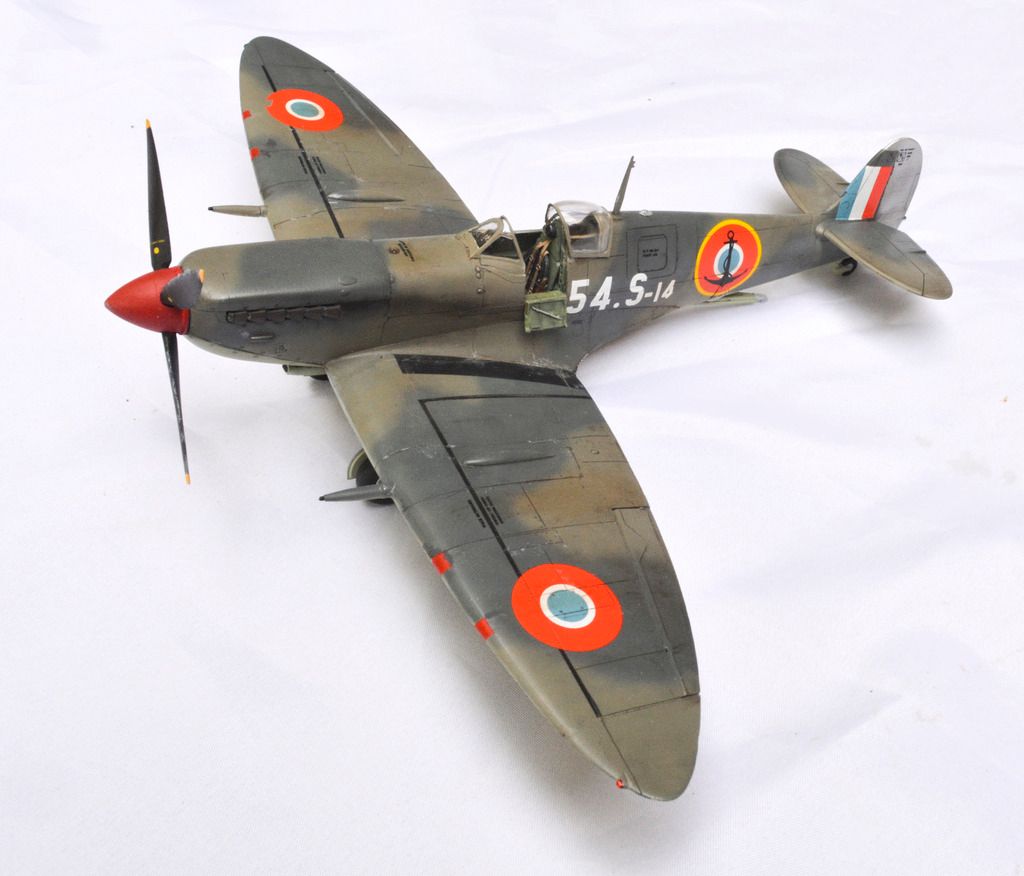
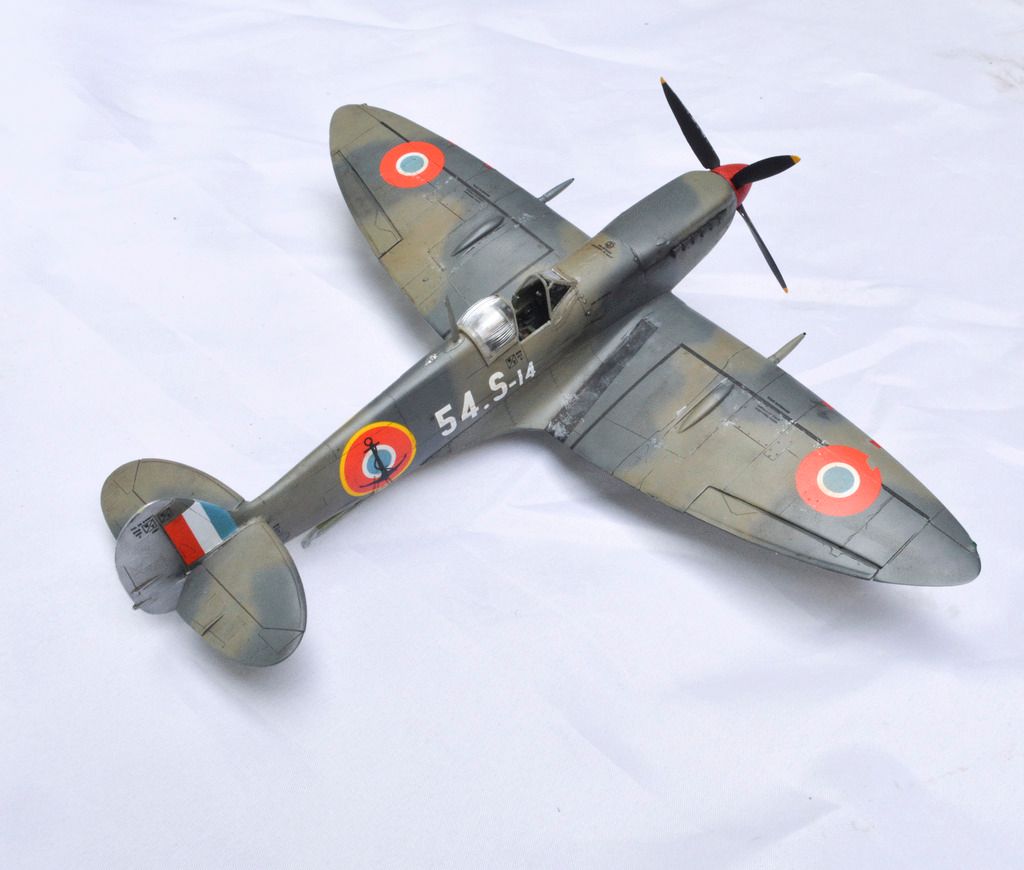
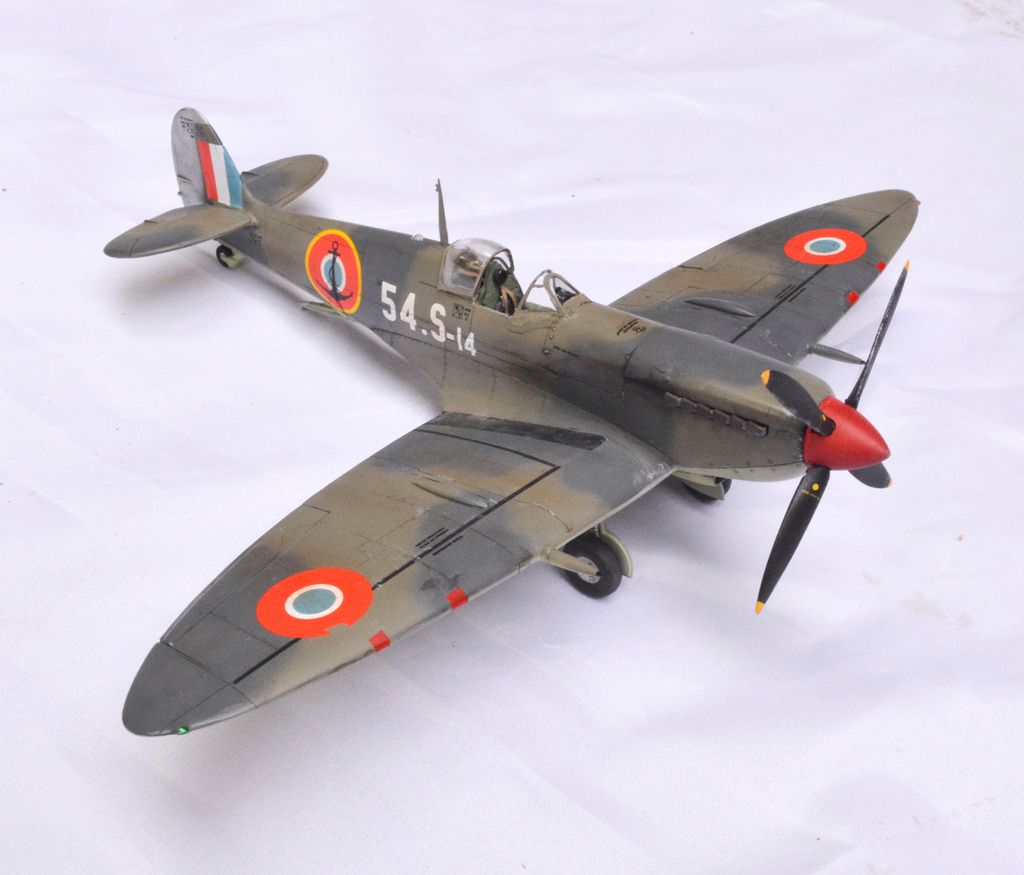
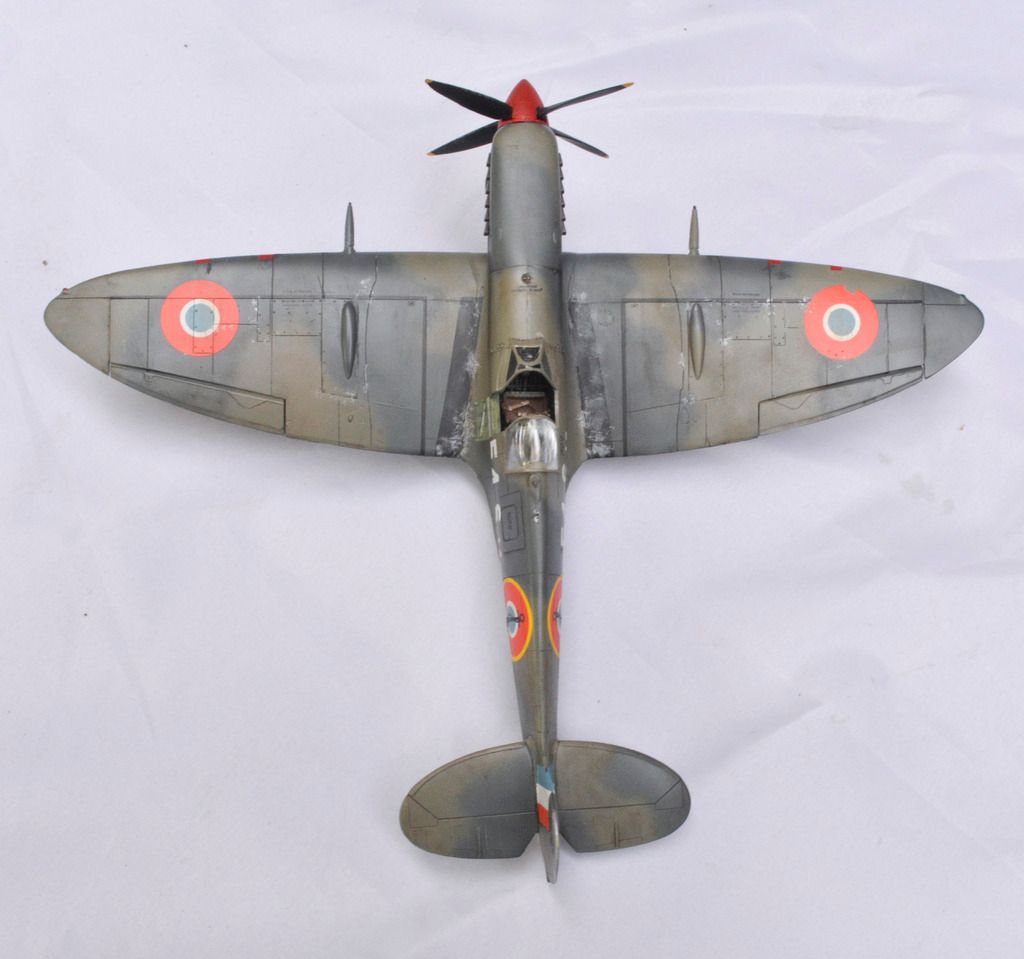
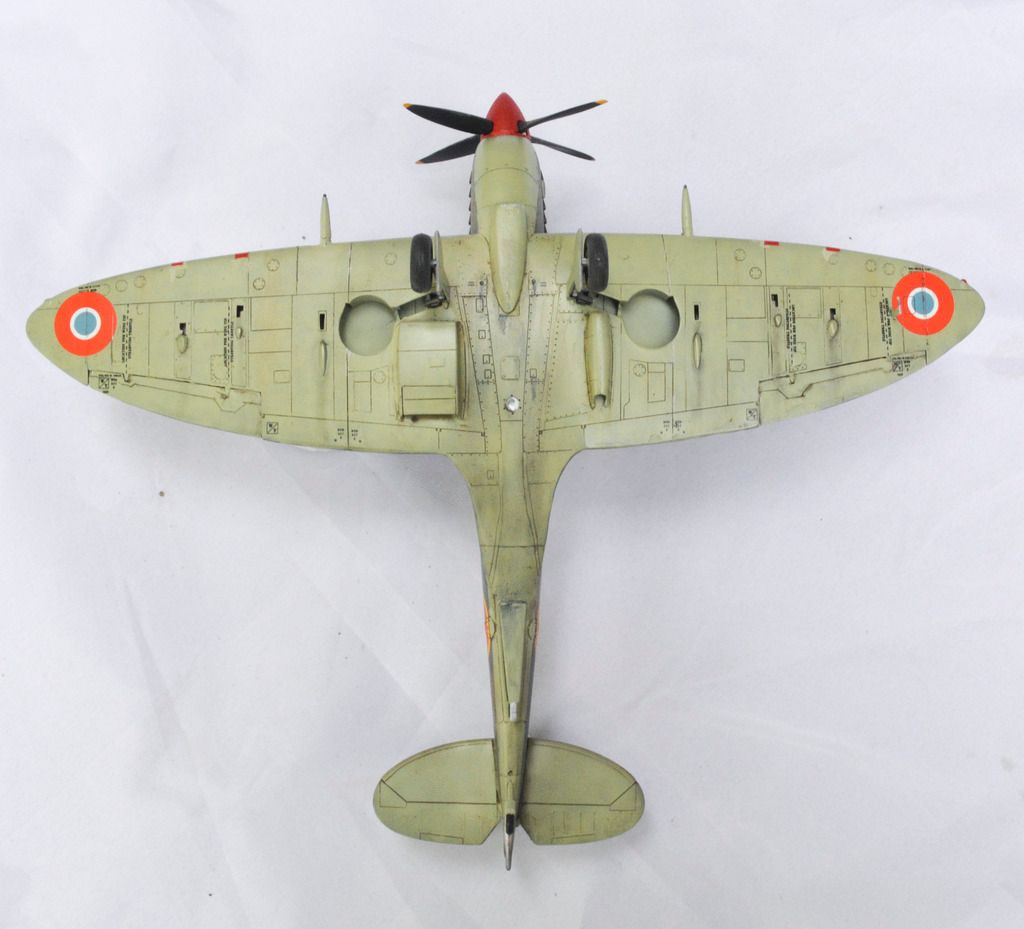
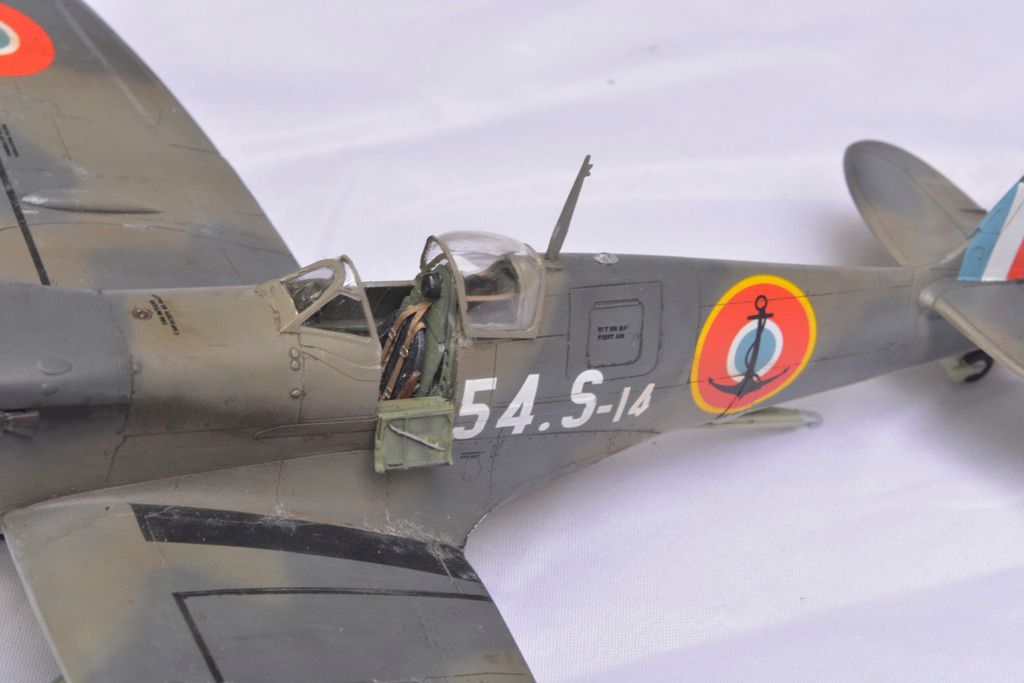
While this kit was the most challenging of the three, I would encourage people not to shy away from it. It's a short run kit, so comparing it to Eduard or Tamiya is unfair from a manufacturing standpoint, but fair from an "I have X amount of money and Y amount of time and want a Spitfire variant" standpoint. I've seen the Hasegawa Seafire Mk.III sprues, and this one seems like it gives you more bang for less buck, but probably more work, too. I'd recommend it with the caveat that it's not good for a novice, and I consider myself intermediate/average, and I still had issues with the warped fuselage. But I'm a sucker for French aircraft, so here it is.
-BD-